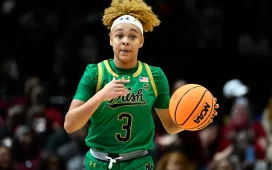When the stadium lights blaze and the roaring cheers of fans fill the air, it’s easy to get lost in the theatrical display of the NFL. But beneath the hard tackles and breathtaking touchdowns lies a foundation far more intricate and essential: the continuous cultivation of leadership.
It’s not merely about scouting for top-tier talent; it’s about nurturing individuals who can rally their teammates, even in the direst situations. One notable example of such commitment to leadership within the NFL framework is Stacy Danley. An ex-player turned coach, Danley’s journey epitomizes the transformation from a player to a guiding force, showcasing that leadership is not just an innate trait but something that can be developed and honed over time.
At the heart of this leadership journey is self-awareness. Before a player can lead others, they must first understand themselves — their strengths, their weak points, and their unique role within the team. A genuine leader knows when to step up, but equally when to step back and let others shine. By fostering an environment of introspection, teams ensure that players are not just physically but mentally primed for the challenges ahead.
But introspection alone isn’t enough. There’s a tangible power in experiential learning. Some of the most forward-thinking teams employ a strategy of rotating roles during practice. This isn’t just to keep things fresh. By letting players step into different positions, they gain a profound empathy for their teammates’ roles. They understand the pressures, the responsibilities, and the nuances of positions other than their own. This holistic view of the game allows them to lead with understanding and compassion.
Off the field, too, leadership development continues. From community outreach programs to team-building retreats in the wilderness, players learn that leadership extends beyond the four quarters of a game. It’s about making a difference, about being a beacon of hope and inspiration for the community, and about setting an example for the younger generation.
The mentoring aspect of leadership cannot be overstated. Often, seasoned players take rookies under their wings, guiding them through the labyrinth of professional football. This isn’t just about teaching them the tricks of the trade but imparting wisdom, sharing experiences, and building character. It’s in these quiet moments, away from the spotlight, that true leaders are born.
As the landscape of the NFL evolves, with ever-shifting strategies and a constant influx of fresh talent, one thing remains steadfast: the value of strong leadership. Teams that prioritize leadership development don’t just see short-term wins; they build legacies. They create an ethos that resonates through generations, ensuring that even as players come and go, the spirit of the team remains unbreakable.
In conclusion, while the spectacle of the NFL captures our imaginations, it’s the undercurrent of leadership development that truly drives teams to glory. As we celebrate the touchdowns and game-winning plays, let’s also tip our hats to the silent architects of success: those who understand that leadership is the real game-changer.







